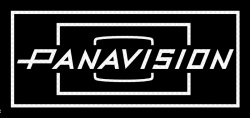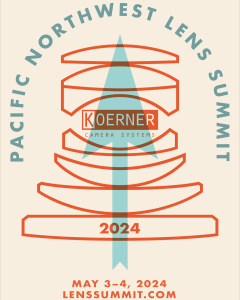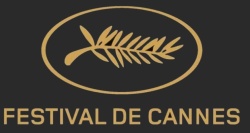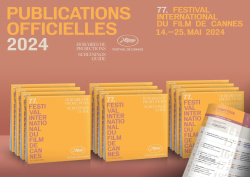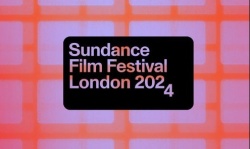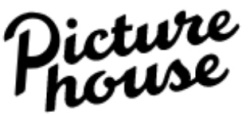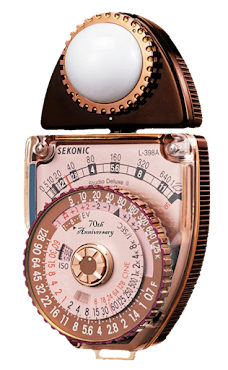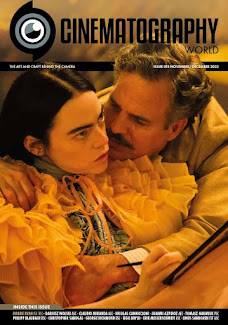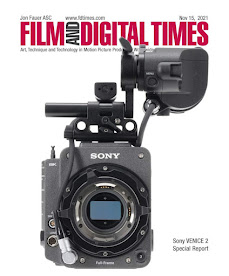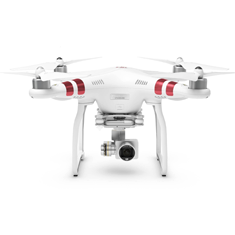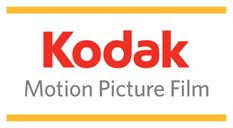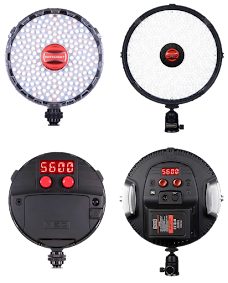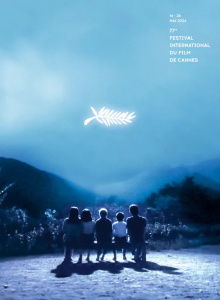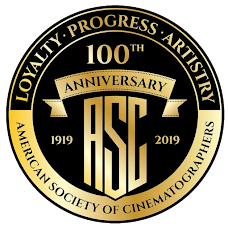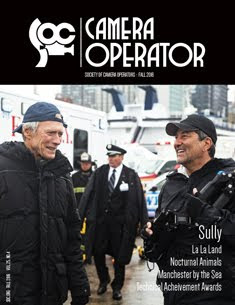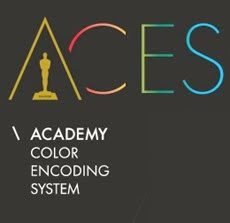Read below 25 tips on cinematography by Roger Deakins, ASC, BSC.
1. Don’t Get Distracted with Technique
“Operating the wheels needs to become second nature as it can be a disaster if the technique of operating distracts from the relationship that an operator has with the subject. When I was starting I practiced doing figures of eight with the wheels and progressed to signing my name with them. I don’t feel the need to practice anymore but I do reassure myself that I can still sign my name each time I start a new film, if I am using a gear head. A gear head is not everyone’s choice and I don’t always carry one but it does have distinct advantages on certain set ups and on certain films.”
2. You Must Discover Your Own Style
“I am very wary of showing too much in the way of plans and diagrams. Not because I am secretive and I don’t want to give away something that is personal. Not at all I just remember that when I began as a film maker and a cinematographer I never watched another cinematographer at work. The closest I ever got to seeing ‘how it was done’ was by shooting some documentary footage of Doug Slocombe at work on ‘Pirates of Penzance’. I loved seeing him work but it had absolutely no influence on the way my work evolved.
Our styles could not be more different. That’s my point really. You can’t learn your craft by copying me or anyone else. I hope what I do can do is in some way inspire others but I would be appalled if I though my work was being studied as ‘the right way to do the job’. My way is just one of an infinite number of ways to do the job.”
3. Compromise is Sometimes Needed for a Better Film
“Sometimes, as with the death row scenes on ‘Dead Man Walking’, it is better to compromise composition, lighting and perhaps even sound a little and shoot with two cameras in order to help an actor get their performance. Sometimes it is better to go wider to include a prop in frame than break an actor’s concentration.
When an actor appears on set ready to do a take it may be too late to change anything. At that time if I see a bad shadow or an eyeline that is slightly off I might talk to the actor or I might not. Perhaps I might think it better to change things for take two. If not then I judge it my mistake and I must try not to let it happen next time. In the end a film can look lousy but work because of a great performance but not the other way round. That’s something always worth remembering.”
4. Work Inside Your Practical Limits
“I rarely took lights on the documentaries I shot in Africa. Much of the time I worked without an assistant so carrying more equipment than absolutely necessary was out. I did carry some white bed sheets and a silvered space blanket, which I used for sleeping in on cold nights (and it can get very cold in Botswana for instance) protecting the raw stock and equipment from the sun as well as for lighting.
I think the most important aspect of shooting documentary is to make use of what light is available simply through your positioning of the camera - and the subject if you are controlling what you are shooting. For me, using extra equipment, whether it was a tripod or a reflector, was usually a distraction and counterproductive.”
5. Every Film is the Director’s Film
“I do have a problem with the ease with which you call what we do ‘art’. That is for someone else to conclude. To me it is a job, a creative job that I love to do but a job nonetheless. The collaborative aspect of the job is very important but then so is the hierarchical nature of a film crew. Every film is the Director’s film and we must never lose sight of that.”
- Roger Deakins on Camera Systems
When it was discovered that Deakins was shooting with the ARRI Alexa, and he said he might not ever shoot film again, the film community went crazy. Digital proponents pointed to it as a member of the old guard switching ways and film lovers lamented the inevitability of Deakins’ intentions.But Roger himself was confused over what the whole fuss was about.
B-roll behind the scenes - footage from Skyfall
He takes a no-nonsense approach to cinematography and understands that cameras are just as much a tool as the light meter he keeps on his hip. Despite this pragmatic approach, questions of cameras and camera systems are posed to Deakins quite often (who does his best to skirt around choosing any “right” or “best” camera).
6. Pick a Camera Based on the Job
“There is an obsession with technology that I don’t care for. You pick the camera for the job based on cost and many other factors. I think ‘In This World’ or ‘Slumdog Millionaire’ are good case studies in this regard.”
7. “Cinematography is More Than a Camera”
“Cinematography is more than a camera, whether that camera is a Red an Alexa or a Bolex. There is a little more to it that resolution, colour depth, latitude, grain structure, lens aberration etc. etc. etc. The lenses use for ‘Citizen Kane’ were in no way as good as a Primo or a Master Prime and the grain structure in that film is, frankly, all over the place. But the cinematography? Well, you tell me.”
8. Aspect Ratio is Ultimately a Directorial Choice
“I usually do suggest one format over another for a particular film but the final decision belongs with the director, as with any other aspect of production. Like most of the decisions I make it is, for the most part, an instinctive one based on a sense of the film I get from reading the script.
Some films, like ‘The Assassination of Jesse James…’ or ‘Jarhead’, lend themselves more obviously to a wide screen format whereas I could never imagine ‘House of Sand and Fog’, “The Man Who Wasn’t There’ or even ‘Shawshank Redemption’ in a wide screen format. I would say my preference is for a wide screen image shot in Super 35mm on spherical lenses but the majority of films I have shot have been standard 1:85.”
9. Film Has Its Faults, Too
“There is as much hype about the ‘excellence’ of film as there is about many of the new digital cameras. How quickly we can gloss over the unstable projection, the scratches and reel change dirt, the quality loss that comes from a poor dupe (any dupe) or a blow up done with a bad optical lens.”
10. Camera Choice is a Personal Decision
“In the final analysis you can only judge picture quality by eye and make a personal decision as to what you like and what you don’t like. Perhaps some people really can not see a difference between a 2K scan and a 4K scan of the same negative and I am sure some people really do prefer the look of an image produced by the Red Camera to one shot on film. The choice of a camera system is no different than the choice of a lens set, a camera position or where to put a lamp.”
- Roger Deakins on Film Careers & Getting Work
Roger Deakins has a career we all dream of — a prolific resume (67 films) full of a variety of genres from well-respected critical successes like No Country for Old Men and The Shawshank Redemption to cult classics like The Big Lebowski and Fargo. But, like the rest of us, Deakins had to start at the bottom. And so even though he doesn’t worry so much these days about finding work, he has always pushed his own career forward through his own efforts.
11. Filmmaking Never Gets Any Easier
“On one of my first dramatic films I had got to the set early only to hear the 1st AD and a Carpenter questioning why someone whom they had never heard of was shooting their film. They turned to me and asked if I knew the cinematographer. I said I did. I then told the Carpenter to rig a beam at the ceiling for lighting and asked the AD to send out for some asprin [sic] whilst I went outside to be sick. I still have times when I feel totally stressed out and sick in my stomach. I explain it to myself in thinking that I have ever higher expectations for what I am working on and consequently it never gets any easier.”
12. There is No “Right Way” or Expected Career Path
“If you work your way up you might find it easier financially. Also, you will have time to learn your craft and become confident in what you do. On the other hand you may well find yourself stuck for some time at one level and find it hard to make the jump from an assistant to an operator for instance. If you try to start shooting right away you may find yourself waiting a long time between pay days. Have you a showreel? Friends that might give you a break? A family that you need to support?
I never assisted. I went to film school and started shooting right away after that. Well, to be honest I couldn’t get work as an assistant so I called myself a cameraman. I found it no easier to get work as a cameraman but at least I felt better about myself. It was probably 6 months before I got my first paying work but it built quickly after that.”
13. Contacts Are a Phone Call (or Door Knock) Away
“It should be easy find a name off the credits of a film and then contact an assistant through the Union. [...] You do see jobs advertised in film related magazines but, if I were starting out today I imagine I would be knocking on doors much the same as I did in the 70′s.”
14. Being Local Helps Your Chances for a Job
“I don’t know what other cinematographers do but my assistant hires our crew. We do sometimes take on a local PA but not often a trainee. Everything is done on per project and the budget has a big influence on who we hire and where they come from. I tend to do lower budget films and hence we hire at least the loader and the PA locally. Sometimes the 2nd AC also.”
15. Being Great is Often Rewarded with Loyalty
“There are a number of key crew members that I have worked with consistently. Obviously, not everyone is always available especially when work is slow. I have worked with the same 1st assistant cameraman since he was promoted from 2nd assistant for the last two weeks of ‘Shawshank Redemption’ when the previous 1st AC had another commitment. He has yet to make a ‘wrong move’ so I’m not sure what I would do if he did. I would be in shock probably!”
16. Internships Are Scare, Learn By Discovery
“Personally, when I am shooting a film I am totally focused on the job in hand and find even having a silent observer detrimental. There are many people who ask to be a part of my crew or to merely observe on a production that I might be shooting. Because of my hesitancy to accede to their requests perhaps my consequent feeling of guilt has led to the creation of this site.
For good or bad I never, as a student, had the luxury of observing another cinematographer at work on a set. It was only when I came to work in the US that I actually visited another set. I say this because I genuinely feel that cinematography, like photography in general, is not something that can be learned but, pretentious as it may sound, can only be discovered.”
- Roger Deakins on Camera Assisting
Deakins has claimed on many occasions that he was never a very good camera assistant (AC) and that’s why he became a director of photography (DP). But because of this lack of skill, Deakins holds tremendous respect for camera assistants — especially his go-to guy, Andy Harris, who worked his way up from 2nd AC on The Shawshank Redemption to become Deakins’ preferred first assistant. “Watching Roger work with his first AC and his dolly grip is amazing,” says Daggerlilly, the forum administrator for Deakins’ website. “Andy, his focus puller, can be almost invisible on the set and never seems to take marks and yet the shot is in focus when Roger shoots wide open with very low light and an actor who is never in the same place twice.” So it comes as no surprise that through his relationship with Andy, Deakins has picked up a few tips and more than taken notice of the job of the camera assistant.
1st AC Andy Harris (Left) with Roger Deakins (Center)
17. Pulling Focus is a Tough Job for the AC and the Operator
“The 1st AC’s job is one of the most responsible on the whole crew. I know I could never do it and I have great admiration for someone who does the job well. I have worked with the same 1st AC for many years and we are very much in sync. I do think judging focus is very much intuitive but it is also the job of the operator to watch for image sharpness and for the timing of a pull etc.
Sometimes, as when I am making up the shot or on a particularly tight close up, I will work on a fluid head and have one hand on the focus knob just as if I were shooting a documentary. When you are working fast and without real rehersals, as is becoming the norm, there is little choice to do otherwise.”
18. If You’re Going Handheld, Go with an Experienced AC
“The first thing I should say is that I work with a very special assistant and he rarely needs to work from marks. If I am shooting hand held, as I was in the boxing for ‘Hurricane’ or for pretty much all of ‘Jarhead’, my assistant will attach a remote focus to the camera or I will control the focus myself. I find this is the only way sometimes, especially if I am ‘creating’ shots as things unfold. I spent many years shooting documentaries where I always controlled the focus myself as the kind of films I was shooting demanded a very instinctive way of following the subject. You could use a fast stock to get a greater depth of field but, in truth, it would give you relatively little advantage. You might need to build the light levels to an F8.0 to gain any real advantage from lens depth of field. I would suggest using an experienced assistant at the end of a remote focus system.”
19. Use Focus Marks Only When You Need Them
“On the film ‘Jarhead’ we shot often without rehearsals but as I (often with Scott Sakamoto on a second camera) was operating with a hand held camera it was not only possible to react to an actor’s movements but it was just that style we were looking for. Something less formal, more spontaneous and reactive which we hoped would give more of a feeling of being there to the viewer.
After a take we might talk with the actors about the scene and make suggestions to them at the same time as changing the way we were moving with the camera. It became a interesting collaborative process. Lighting had to be more general in this case and neither I or my assistant gave marks to the actors. In fact my assistant almost never gives marks to an actor. He may put a few marks down to give himself an idea of lens position and it’s distance to some points in the space but he will often say to an actor that they are not for them and nothing for them to bother about.”
20. Collaboration and Trust Between the DP and AC is Key
“My equipment list actually changes very little from film to film. Of course equipment has advanced and that has made for different choices but the basic idea of the package is the same. I have worked with Andy for some time now and I rely on him to test the package before a shoot. We work together on concocting any special items such as the ‘helmet cam’ for shooting the game in ‘The Ladykillers’ and we usually spend a day shooting tests even if the film is quite straightforward.”
- Roger Deakins on Working with Crew
As director of photography, Deakins is at the top of the film crew hierarchy. He has to manage several departments — camera, grip, and electric — all while executing a creative vision that serves the story of the film.It’s a complicated task made even more complex by the wildcard of the people you work with. To speed the process and keep it running smooth, Deakins works with a crew he’s assembled over the years, but that doesn’t mean it’s always easy. Communication is key for him, but so is having a mutual respect and acknowledgement that those crew members are hired for a reason — because they’re good at what they do.Roger knows this and almost always refuses to take sole credit for his work without acknowledging the capable crew that backs him up.
21. Know What You’re Talking About
“I think you need to be very familiar with grip equipment just as you need to be familiar with the range of lighting units available; otherwise you might ask for something that is really impractical or might not produce the right result. It is a Key Grip’s job to come up with a technical solution to a task and also the most efficient way of achieving it but it is the cinematographer’s responsibility to know if the concept will work in the first place. I think this requires a general understanding of the equipment to hand and it’s various usage.”
22. Communicate with Your Key Crew Members
More important than any notes is to spend time with your gaffer and key grip so that you are all in sync with the plans you have of the work ahead. I do remember telling my gaffer once or twice ‘It’s on my diagram’ only to be told that he was going by his memory of what I had said and not diagram I had given him.
23. Feeling Intimidated is Normal
“I generally feel intimidated! One of my first films was with Richard Burton and I felt intimidated by his talent (‘The Spy Who Came in from the Cold’!!!), at least I felt was until he gathered the crew, thanked us all for one of the most pleasant days he had ever experienced on a film, and then told us he had in fact felt totally intimidated by our youth!”
24. Plan Ahead with Your Crew
“After having done a tech scout with the crew I will always draw (sometimes I do them on a computer but not often) plans of each set regardless of how complex the scene or the lighting might be. Each diagram will contain information on lighting positions, lamp types, practical sources, diffusion to be used, camera platforms and crane requirements that was discussed on the scout as well as other things that I have considered since.
Beautiful cinematography by Roger Deakins
"The Assassination of Jesse James by Coward Robert Ford"
Often I will return to particularly difficult locations and scout them with my Gaffer and Key Grip only. Before production I will sit down with my Gaffer and Key Grip to go through all the details of the plans so that we all have a clear of what is involved and so they can communicate these needs to the rigging crew.
Something else that is extremely important is to go through the schedule in detail with your crew. Any pre-rig requirements have to be discussed with the AD and sometimes the schedule needs to be adapted to facilitate the work required. I couldn’t say that I have any tricks other than that I try to work with the same crew as much as I can. It makes such a difference when you know the people around you and they know the way you like things done. I find that once a shoot starts I am far too busy on other things. Naturally, we refresh ourselves on what is coming up in the next day or so as we go but I think it is important to take the time during prep to look at the overall schedule. It is good to know where you might need extra effort.”
25. It’s Your Job to Find a Way to Work with Others
“As I have said before every director is different and may require something different from a cinematographer. The onus is on the cinematographer to find out how best to work for and with a director and with other members of the crew, for that matter.”














































